- READ ALSO: Gucci to go fur-free in 2018
Suspense had already been building for the show by Gucci's star creative director Alessandro Michele due to the invitations – orange timers which counted down to the event in glowing red numbers.
The first shock came when it started on time – almost unprecedented in fashion history.
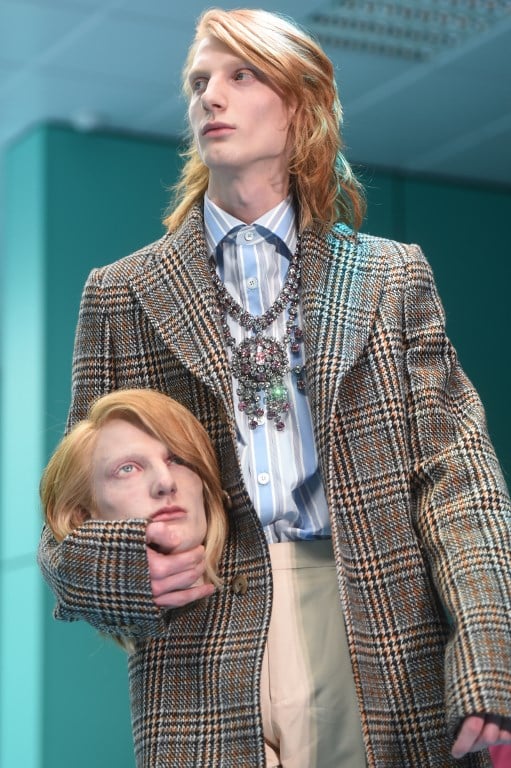
Photo: Filippo Monteforte/AFP
Then male and female models walked onto a runway amid operating tables under bright neon lights in the Gucci Hub, the brand's Milan headquarters, over the steady beeping of a heart monitoring machine.
Michele introduced the “Cyborg Gucci” in the Fall/Winter 2018-2019 collection, which included a wild mix of cultures and symbols, from a pagoda hat to a balaclava, a classic burgundy velvet dress to a gold lurex jacket, fine lace to the logo of the New York Yankees.
The models added to the transgressive vibe – not only did some carry replicas of their own severed head, but others were adorned with a third eye, or even a baby dragon.
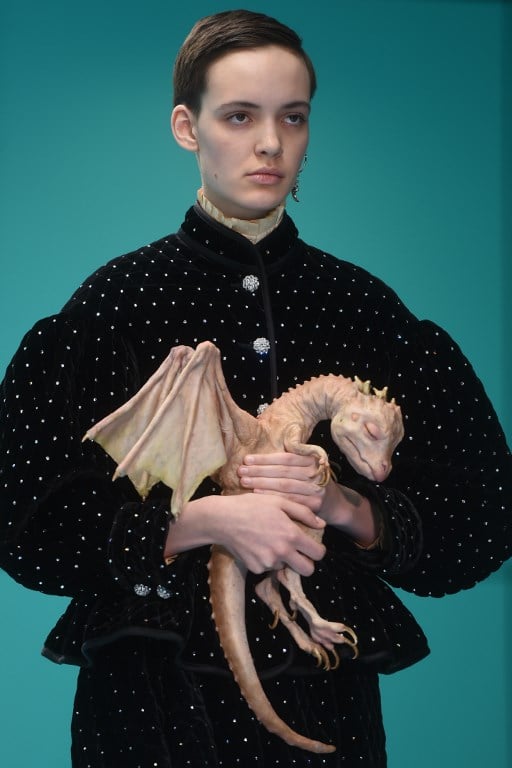
Photo: Filippo Monteforte/AFP
“What touches me is not just the talent but also the dose of humour and self-deprecation on the part of Alessandro Michele,” said actress Chiara Mastroianni.
“His collection is so rich it will take time to understand everything,” she said.
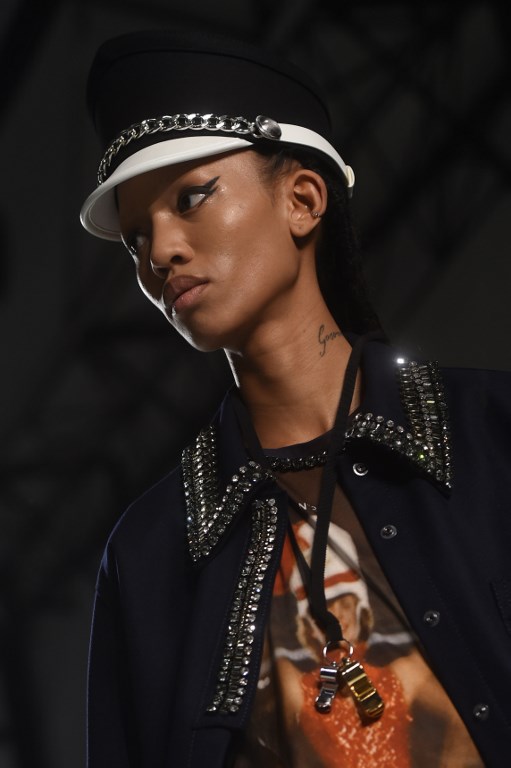
A majorette theme at N21. Photo: Filippo Monteforte/AFP
Another first day highlight was the launch of the exhibition “Italiana: Italy Through the Lens of Fashion 1971-2001” by the National Chamber for Italian Fashion.
Donatella Versace, Giorgio Armani, Pierpaolo Piccioli, Silvia Venturini Fendi and Jean-Paul Gaultier were some of the stars attending at the Palazzo Reale.
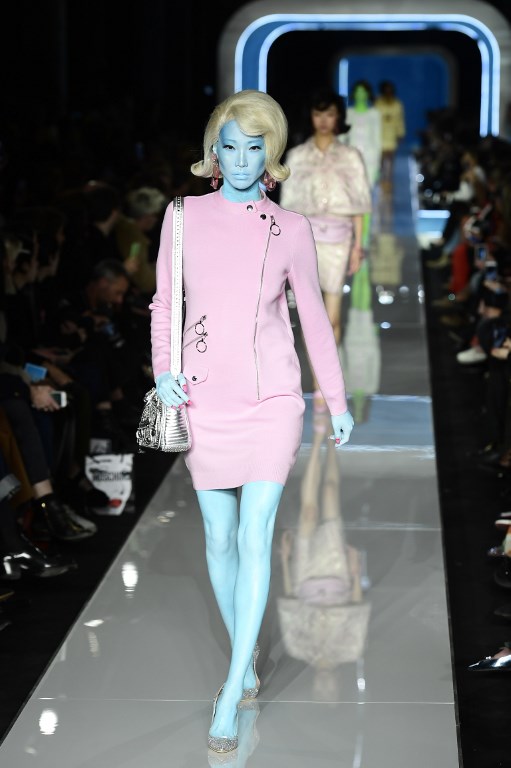
Models were painted blue and green at Moschino. Photo: Miguel Medina/AFP
The exhibition was organised by theme – Identity, Democracy, Logomania, Diorama, Project Room, Bazaar, Post-Production, Glocal and The Italy of Objects – and included the clothes by fashion houses such as Missoni, Armani, Versace, Krizia, Romeo Gigli and Gianfranco Ferre.
“There is no nostalgic intention but rather pride and willingness to celebrate fashion and reproduce its complexity,” said curator Maria-Luisa Frisa.
“Italian fashion is a creative laboratory that has generated worlds, defined strong individual characteristics… and continues to do so today,” she added.
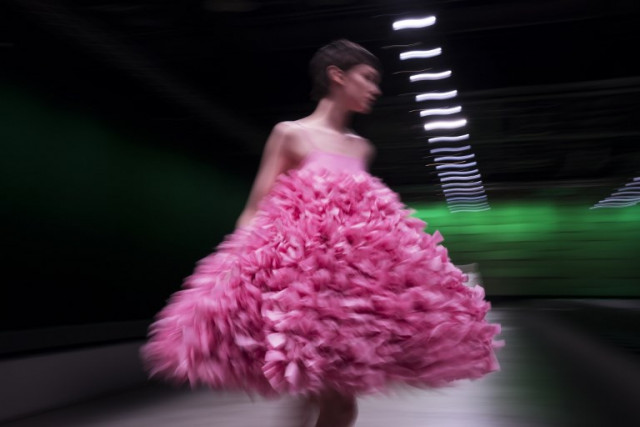
Volume at Annakiki. Photo: Marco Bertorello/AFP
READ ALSO: Forget Milan: Why Florence is the cradle of Italian fashion
By Isabelle Sciamma

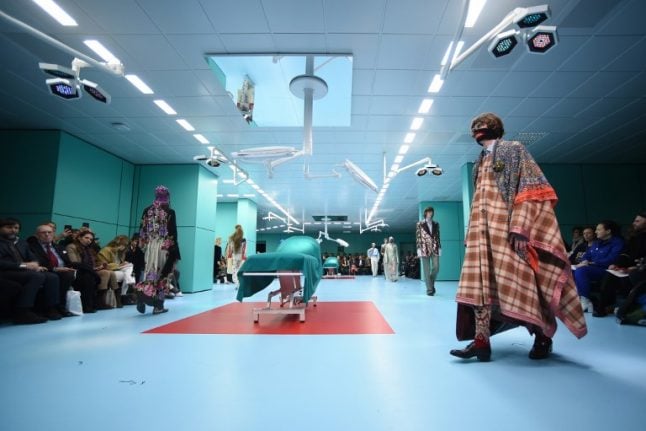


 Please whitelist us to continue reading.
Please whitelist us to continue reading.